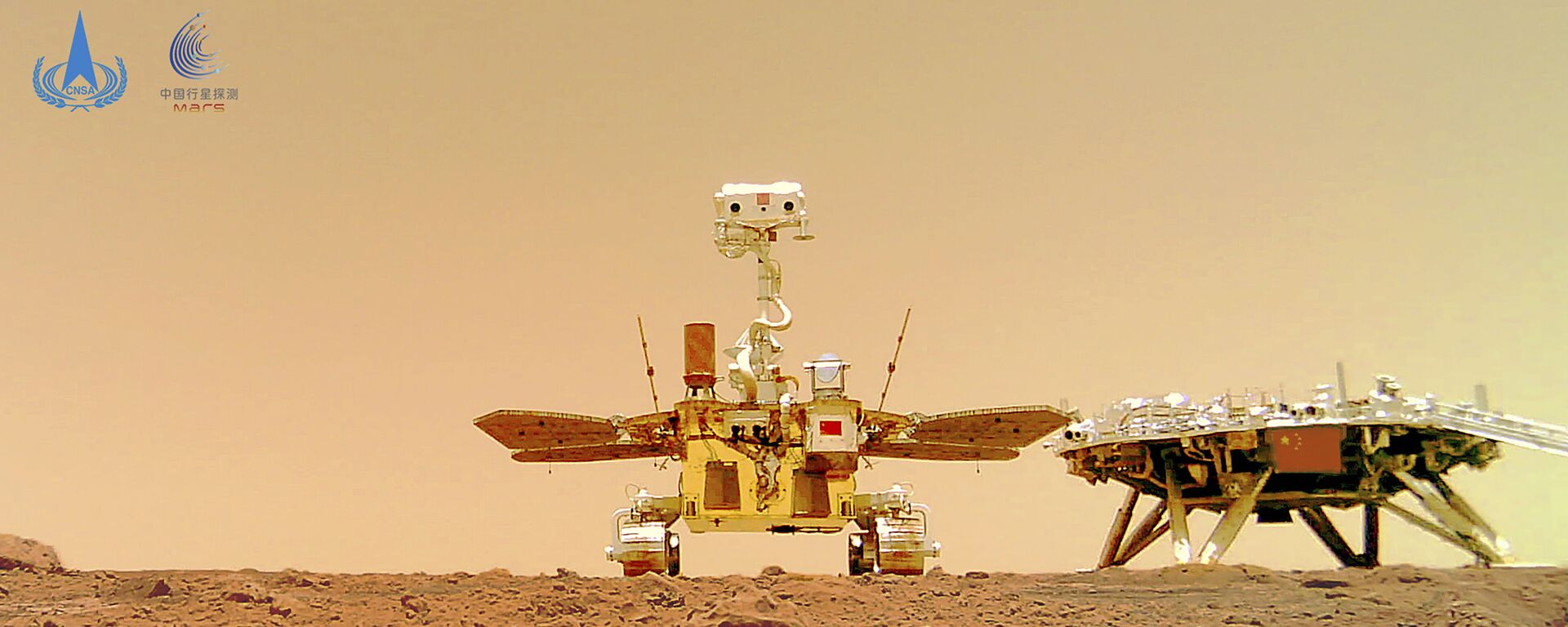https://sputnikglobe.com/20220202/earth-being-followed-by-trojan-asteroid-which-one-day-might-be-visited-by-humans-1092685358.html
Earth Being Followed by 'Trojan' Asteroid Which One Day Might Be Visited by Humans
Earth Being Followed by 'Trojan' Asteroid Which One Day Might Be Visited by Humans
Sputnik International
Although the presence of so-called Trojan asteroids near other planets in our Solar System such as Venus, Mars, Jupiter, and Neptune has been known for... 02.02.2022, Sputnik International
2022-02-02T14:01+0000
2022-02-02T14:01+0000
2022-11-30T10:10+0000
solar system
jupiter
asteroid
science & tech
earth
mars
https://cdn1.img.sputnikglobe.com/img/107850/34/1078503455_0:60:1920:1140_1920x0_80_0_0_7d207190cf2edd770382bc9452f00c27.jpg
Astronomers have detected the presence of a Trojan asteroid lurking in Earth's orbit, according to a new peer-reviewed study published in the scientific journal Nature Communications.Trojan asteroids lead or follow a planet while it orbits the Sun. They are found at Lagrande points, or locations where the gravity of the planet and the Sun cancel each other out, according to researchers.The newly-detected asteroid is only the second to date to have been spotted by scientists, with the first one – TK – detected in 2010.The new celestial object has been christened 2020 XL5.Clues about the new asteroid's existence were detected by the Pan-STARRS telescope in Hawaii in December 2020. A team of scientists led by Dr. Toni Santana-Ros from the University of Barcelona studied the space rock between February and March last year.During the course of their study, the team also analysed archives of sky surveys from between 2012 and 2019, besides examining the object in 2021 from three different ground-based observatories. It was then that the team was able to conclusively establish the presence of a Trojan asteroid.Scientists said that humans might be able to one day visit the asteroid, settle “human bases, or install scientific hardware that would benefit from their peculiar location."The asteroid will stay in its current orbit for at least 4,000 years, scientists claim.The colour indices from observational images suggest that the asteroid falls in the C-complex taxonomy, meaning it is primarily composed of carbon.It is suspected that the new asteroid could have originated in the asteroid belt located between the orbits of Mars and Jupiter, and may have entered Earth’s orbit due to Jupiter's gravitational pull.Researchers say that the study of Trojan asteroids could provide “key clues” to the evolution of the Solar System, therefore providing significant insights into its origins.
https://sputnikglobe.com/20220129/china-lays-out-plan-for-moon-landings-asteroid-defense-system-in-new-space-program-white-paper-1092596641.html
earth
mars
Sputnik International
feedback@sputniknews.com
+74956456601
MIA „Rossiya Segodnya“
2022
News
en_EN
Sputnik International
feedback@sputniknews.com
+74956456601
MIA „Rossiya Segodnya“
Sputnik International
feedback@sputniknews.com
+74956456601
MIA „Rossiya Segodnya“
solar system, jupiter, asteroid, science & tech, earth, mars
solar system, jupiter, asteroid, science & tech, earth, mars
Earth Being Followed by 'Trojan' Asteroid Which One Day Might Be Visited by Humans
14:01 GMT 02.02.2022 (Updated: 10:10 GMT 30.11.2022) Although the presence of so-called Trojan asteroids near other planets in our Solar System such as Venus, Mars, Jupiter, and Neptune has been known for decades, it wasn’t until 2010 that the first Earth Trojan (ET) asteroid was spotted.
Astronomers have detected the presence of a Trojan asteroid lurking in Earth's orbit, according to a new peer-reviewed study published in the scientific journal
Nature Communications.
Trojan asteroids lead or follow a planet while it orbits the Sun. They are found at Lagrande points, or locations where the gravity of the planet and the Sun cancel each other out, according to researchers.

29 January 2022, 00:43 GMT
The newly-detected asteroid is only the second to date to have been spotted by scientists, with the first one – TK – detected in 2010.
The new celestial object has been christened 2020 XL5.
Clues about the new
asteroid's existence were detected by the Pan-STARRS telescope in Hawaii in December 2020. A team of scientists led by Dr. Toni Santana-Ros from the University of Barcelona studied the space rock between February and March last year.
During the course of their study, the team also analysed archives of sky surveys from between 2012 and 2019, besides examining the object in 2021 from three different ground-based observatories. It was then that the team was able to conclusively establish the presence of a Trojan asteroid.
"There is no doubt that this is our object and that it cannot just be some blurry thing,” Dr Santana-Ros said, also claiming that analysis of sky scans and allied data from the last 10 years shows that the Trojan asteroid has been following a definite orbital path.
Scientists said that humans might be able to one day visit the asteroid, settle “human bases, or install scientific hardware that would benefit from their peculiar location."
The asteroid will stay in its current orbit for at least 4,000 years, scientists claim.
The colour indices from observational images suggest that the asteroid falls in the C-complex taxonomy, meaning it is primarily composed of carbon.
It is suspected that the new asteroid could have originated in the asteroid belt located between the orbits of Mars and Jupiter, and may have entered
Earth’s orbit due to Jupiter's gravitational pull.
Researchers say that the study of Trojan asteroids could provide “key clues” to the evolution of the Solar System, therefore providing significant insights into its origins.


